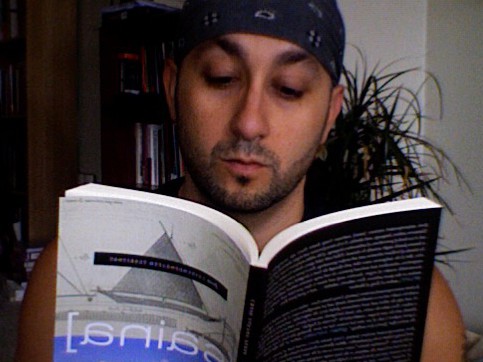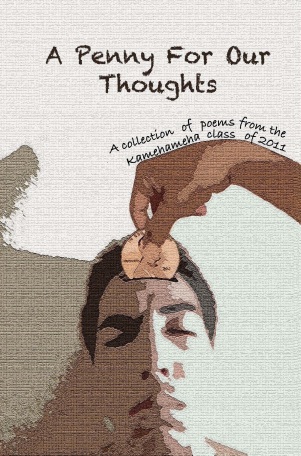in solidarity with the Standing Rock Sioux Tribe and all peoples protecting the sacred waters of this earth
water is life becuz our bodies are 60 percent water
becuz my wife labored for 24 hours through contracting waves
becuz our sweat is mostly water and salt
becuz she breathed and breathed and breathed
water is life becuz our lungs are 80 percent water
becuz water broke forth from her body
becuz amniotic fluid is 90 percent water
becuz our daughter crowned like a new island
water is life becuz our blue planet is 70 percent water
becuz some say water came from asteroids and comets
becuz some say the ocean formed within the earth from the beginning
becuz water broke forth from shifting tectonic plates
becuz we say our gods created water
becuz no human has found a way to safely create water
water is life because we can’t drink oil
becuz water is the next oil
becuz we wage war over gods and water and oil
water is life becuz only 3 percent of global water is freshwater
becuz the water footprint of an average american is 2000 gallons a day
becuz it takes 660 gallons of water to make one hamburger
becuz more than 1 billion people lack access to clean drinking water
becuz in some countries women and children walk 4 miles every day to gather clean water & carry it home
becuz we can’t desalinate the entire ocean
water is life becuz if you lose 5 percent of your body’s water your body will become feverish
becuz if you lose 10 percent of your body’s water your body will become immobile
becuz we can survive a month without food but less than a week without water
water is life becuz we proclaim water a human right
becuz we grant bodies of water rights to personhood
water is life becuz the ocean is 99% of the biosphere
becuz some countries signed the UN Convention on the Law of the Sea
becuz from this coastline to 200 nautical miles is the nation’s exclusive economic zone
becuz my wife says the Hawaiian word for wealth, waiwai, comes from their word for water, wai
water is life becuz corporations steal, privatize, dam, and bottle our waters
becuz sugar, pineapple, corn, soy, and gmo plantations divert our waters
becuz concentrated animal feeding operations consume our waters
becuz pesticides, chemicals, oil, weapons, and waste poison our waters
water is life becuz we say stop, you are hurting our ancestors
becuz they say we thought this was a wasteland
becuz we say stop, keep the oil in the ground
becuz they say we thought these bones were fuel
becuz we say stop, water is sacred
becuz they say we thought water is a commodity
becuz we say we are not leaving
becuz they say we thought you were vanishing
becuz we are water warriors and peaceful protectors
becuz they call us savage and primitive and riot
becuz we bring our feathers and lei and sage and shells and canoes and hashtags and totems
becuz they bring their bulldozers and drills and permits and surveillance drones and helicopters
becuz we bring our treaties and the UN Declaration on the Rights of Indigenous Peoples
becuz they bring their banks and politicians and police and private militia and national guard and lawyers
becuz we bring our songs and schools and lawyers and prayers and ceremonies
becuz they bring their barking dogs and paychecks and pepper spray and rubber bullets
becuz we bring all our relations and all our generations and all our livestreams
water is life becuz our drumming sounds like rain after drought echoing against our taut skin
water is life becuz our blood is 90 percent water
becuz every minute a child dies from water-borne diseases
becuz every day thousands of children die from water-borne diseases
becuz every year millions of children die from water-borne diseases
water is life becuz my daughter loves playing in the ocean
becuz someday my daughter will ask us, “where does the ocean end?”
becuz we will point to the dilating horizon
water is life becuz our eyes are 95 percent water
becuz we will tell her that the ocean has no end
becuz we will tell her that the sky and clouds carry the ocean
becuz we will tell her that the mountains embrace the ocean into a blessing of rain
becuz we will tell her that the ocean rain fills aquifers and lakes
becuz we will tell her that the ocean rain flows into the Missouri River
becuz we will tell her that ocean rain river water connects us to our cousins at Standing Rock
becuz we will tell her about the sacred stone of a mother holding her child
becuz we will tell her that the Sioux are still there, still breathing
water is life becuz our hearts are 75 percent water
becuz i will whisper to her, while she is sleeping, “hanom hanom hanom,” my people’s word for
water, so that our dreams of water will carry us home
water is life, water is life, water is life















